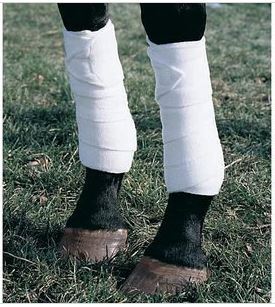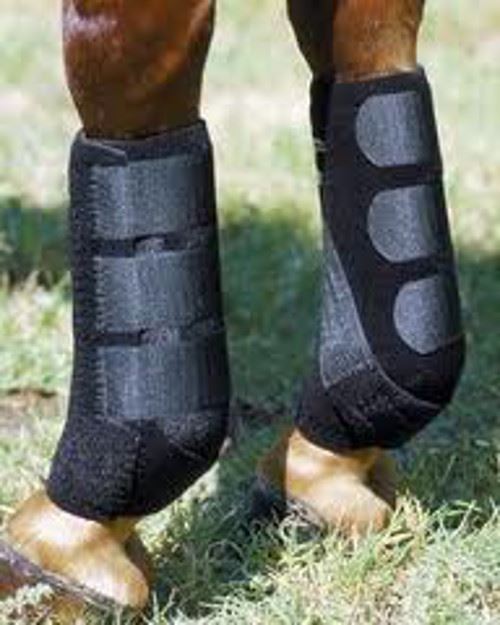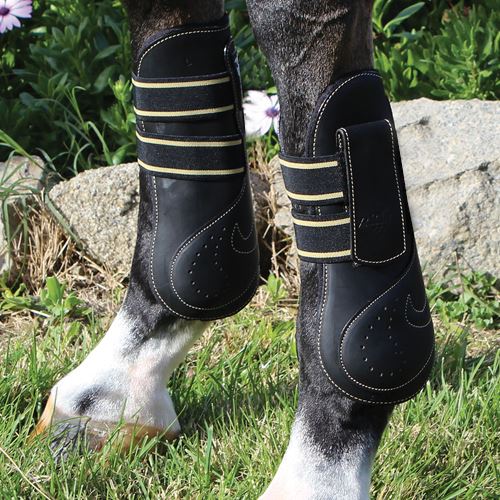While every rider wants to ensure that her horse is as protected as possible during athletic endeavors, the options of what boots, wraps and other leg-protection measures can be daunting.
By Sarah E Coleman
While there are a plethora of equine leg protection options out there, not all of them are right (or safe!) for every application. What might be popular for a reining or working cow horse might not be the best choice for those riding out cross-country, where boots are exposed to water, dirt and debris, which could weigh them down.
Equine leg protection has several different purposes, which are dependent on their design. Some boots are designed to protect horse’s legs while they are being ridden or turned out; other boots are designed to absorb shock from physical activity.
Your horse may be a candidate to wear boots if:
- He is a big mover
- He interferes, knocking one limb with another
- He has sustained an injury to one of his limbs
No matter what boots you decide to use, fit is key: You should be able to fit one finger between the boot and your horse’s leg. If the boot is too lose, it can slip down or gather dirt, causing rubs.
Types of Leg Protection
Here is a brief rundown of the different boot styles and their uses:
Polo wraps:

Made of a thick, stretchy fleece material, polo wraps can protect a horse’s legs from dings from other limbs. While they are one of the most-basic types of leg protection, care must be taken to apply them correctly; improperly used wrapped polo wraps, those applied either too tightly or with uneven pressure, may cause tendon injuries.
Splint Boots:
Used on horses that interfere, splint boots have a reinforced area on the inside of the leg that is designed to absorb impact from a horse’s hoof. Typically some of the most-affordable boots, they are quicker and easier to apply then polo wraps. Split boots can also be used during turnout.
Support Boots:

An all-purpose boot, support boots are used to provide support more than protection; they have a suspensory strap that helps provide support to the leg.
Cross-country boots:
Designed to protect a horse as he gallops over uneven terrain and water on a cross-country course, these boots are typically made of a strong, lightweight material. They have reinforced strike pads on the interior of the boot to provide additional protection. These boots do not absorb water, unlike polo wraps and support boots.
Open-front Jumping Boots:

With the front of the horse’s leg exposed, the protection these boots afford is in the back, covering the tendon area. The front of the boot is left open so that a horse “feels it” if he touches a rail.
Skid Boots:
Common in Western events, skid boots are used on a horse’s hind legs during ridden work; they protect the horse as he lowers his hocks and sinks down into the footing. In addition to protecting from abrasions, they also protect the legs from strikes from opposing legs.
Bell boots:
Designed to fit around the fetlock and protect the coronet band and hoof from being grabbed by another hoof, bell boots can be either pulled on fastened with Velcro. Designed to cover the heel bulb to prevent injury (as well as shoe removal), bell boots should also be strongly considered if the horse is wearing studs in his shoes so he does not injure himself.
Fetlock Boots:
These boots are used to protect the fetlocks on the hind legs. Similar to splint boots, their protection is focused on the inside to absorb strikes from opposing legs.
Flat Work/Dressage Boots:

Typically lined with neoprene or fleece, dressage or flat-work boots are easy to apply and easy to clean. Similar to splint boots, they are reinforced on the inside of the leg to protect from interference.
